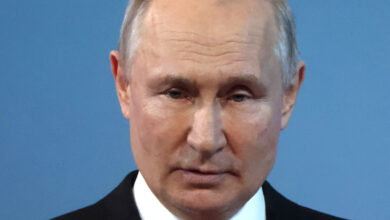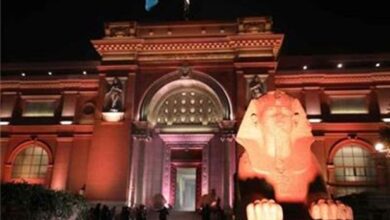Situated at the Tunis artist colony in Fayoum, Egypt, the Caricature Museum, which opened its doors to the public last year, houses an impressive collection of cartoons from local newspapers and magazines dating back to the early twentieth century. The first of its kind in the Arab world, the museum is a tribute to the witty social and political commentary –and biting satire– for which Egyptian cartoonists are known.
The idea of the Caricature Museum was something its founder, Egyptian artist Mohamed Abla, had contemplated for some time. The attractive adobe-style buildings that house the museum were donated by Abla and were designed by Egyptian architect Adel Fahmi. Abla has been collecting caricatures all his life. Egyptian caricaturists like Hassan Hakim, Amr Selim, Samir Abdel Ghani and Salah Jahin have long inspired his work.
The first modern Egyptian caricatures date back to the 19th century and often expressed Egyptians’ concerns about the British occupation and the Egyptian monarchy. Since the 1952 coup, caricaturists have focused on imperialism, the US involvement in the Middle East and the Arab-Israeli conflict. This rich heritage of caricature art, as Abla describes it, is worthy of safeguarding as it provides invaluable insights into the complications of Egyptian life and pertinent issues at any given point in time.
The Caricature museum is Abla’s tribute to his mentor, Egyptian cartoonist Zohdi al-Adawi, who had repeatedly tried to set up a cartoon museum from 1964 to 1984. Its urgency, however, stemmed from the incident in 2005 when cartoons depicting the Prophet Mohamed were published in a Danish newspaper and seeing the response it triggered, explains Abla. “Things have changed after 9/11,” Abla sighs, poking at the crumbling coals crowning his shisha pipe. “The world became a different place; certain ideas were formed as a result of those events, and that needs to be addressed. You can try to fight those ideas and preconceptions with lectures and debates, or you can do it through art.”
The museum’s collection started with around 200 drawings, most of which are originals with the exception of a few items that come from newspapers and magazines such as "Al-Matraqa,” "Al-Fukaha" and "Al-Kashkoul" which no longer exist, as well as "Ruz al-Yusuf" and "Sabah al-Kheir" which continue to be printed today. Abla is nevertheless constantly expanding the museum’s collection and his ultimate goal is to create a digital archive to safeguard Egypt’s rich heritage of caricature art.
For Abla, the museum is an inspiration, a document and an alternative school. Abla has an unwavering belief in the power of art and sees the museum’s potential to open up new ideas and engage its visitors on the aesthetic and intellectual levels.
“I’m not a rich man,” he says. “Any money I make from art goes directly back into art. Into creating this,” he says, pointing to the surrounding museum building and Abla’s Winter Art School, that are bustling with energetic visitors and young artists expanding the scope of their talents. “If I live in a community that’s full of fanatics, then I won’t be living happily. But if I want to live in a community that cares about and produces art–if I want that kind of happiness–then I need to nurture it; help it grow.”




